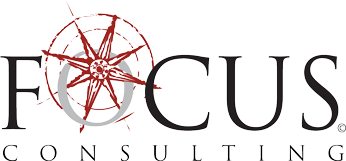
In Focus: Curtis Ball’s Insights on Low Impact Development
As our cities grow, trees and vegetation are removed and surfaces are covered by pavement and buildings. Rain cannot soak through these hard (impervious) surfaces as it did before development, and as a result, more run-off is generated and more demand is placed on city storm drainage systems. In addition to the extra water volume, the water quality is also degraded as the water flows across these surfaces, picking up pollutants along the way.
Low Impact Development (LID) favors a soft approach to site engineering to manage storm water in a way that seeks to mimic the natural movement and drainage of water. It allows time and provides opportunities for storm water to soak into the soil or be collected and reused for landscape irrigation rather than allowing it to run off into ditches or storm drains.
A Focus Site Civil Project Manager, Curtis Ball, PE, has over two decades of experience in land development and redevelopment. Whether a commercial or residential project, he’s always been interested in best practices for site design to minimize the negative impacts of development on water quality. “LID makes sense to me. Focus has been incorporating best management practices (BMPs) in our projects for years but this approach has gained traction as firms prepare for State-mandated LID design starting March 2020,” explains Curtis.
Our Site Civil Department team works doggedly to keep abreast of city and State ordinances which address LID. Whether a general description or entire sections of code, our knowledge of storm water ordinances and design criteria is one our clients can rely on to promote and apply wise site design approaches to reduce the impacts of development.
While LID design principles can be applied at any stage of development, Curtis has found that incorporating them in the initial planning stages of a project yields better value to the project and client. “Once the design parameters are defined, we roll up our sleeves. Our project team looks closely at site considerations, soil characteristics, groundwater measurements, existing drainage patterns, and existing vegetation so we can design LID features that are compatible with the site.”
One of the primary goals of low impact development is to promote the use of natural systems for infiltration and bioretention to treat and use rainwater as close to the source as possible. “In order to get storm water into the ground, a site that has permeable soils and a low groundwater level is optimal,” explains Curtis. “We carefully review a geotechnical report and make sure a percolation test is done to know the permeability of the soils. An old lake bottom full of silt and clay will hinder the movement of water through the soil, while a site on an alluvial fan will have soils with gravel and coarse aggregates through which the water will move much more quickly.”
As the design progresses, Focus works to design LID solutions that promote storm water treatment and infiltration, meet water quality requirements, and reduce the overall impact of the development. The team also makes sure calculations are performed to ensure consistent design and compliance with UPDES permit requirements.
The benefits of LID practices extend well beyond cleaning and protecting our water resources. The thoughtful implementation of LID design can reduce the cost of detention and retention on site and lower project costs. Curtis described two recent projects in Millcreek where a large underground retention gallery had been designed for each site. After the owner noticed that the soils “percolated” well, an additional perc test was performed to quantify that percolation rate and the Focus team performed calculations to downsize the retention systems by a third. This soft approach to design coupled with soil data helped to save the client money.
At Focus, we believe designing vibrant, healthy, more sustainable places for our families to live and work is the greatest benefit of all.

Leave a comment
You must be logged in to post a comment.